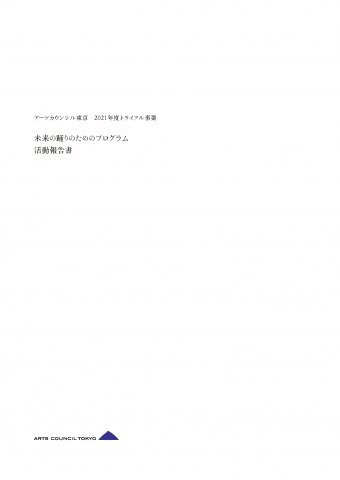- Home
- What we do
- Education Programs
- Trial Program for Dance of the Future
- FY2021 Trial Project – Program for Dance...
To widely promote creativity around the art of dance, this trial program will create an environment that enables participants to closely reexamine their own activities and carry out more vigorous projects. With the two foundations of lectures and laboratory experience, we will aim for a deeper grasp of approaches to future dance arts in terms of both thought and practice. The program is meant for people involved in various aspects of dance, regardless of the field in which they work.
With invited instructors from various artistic fields, the course will explore possibilities in dance from multiple angles, through cross-genre lectures offering new perspectives on dance arts, presentations on past examples of unique creativity in dance works, and more.
Number of applicants accepted
About 20
Eligibility
People with at least three years of experience in arts/culture-related activities regardless of art genre, including choreographers, dancers, performers, directors, actors, visual artists, musicians, video creators, dramaturges, producers, researchers, and critics.
Project period
December 2021 – January 2022 (total of 7 sessions / weekdays, 19:00 to 21:30; projected duration, 2.5 hours including question and answer period)
Venue
Arts Council Tokyo (Kudan First Place 8F, 4-1-28 Kudankita, Chiyoda-ku, Tokyo)
*May be changed to online viewing, depending on the COVID-19 situation.


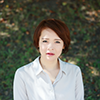

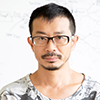
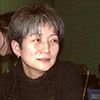 photo: Hiroshi Nakamura
photo: Hiroshi Nakamura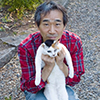
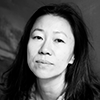 photo: Miana JUN
photo: Miana JUN– Participants will select either Yuya Tsukahara or Takao Kawaguchi as their mentor and divide into two groups for the course.
– Participants will each bring their own idea for a creative project, and carry out repeated trial performances and discussions facilitated by the group mentor.
– Rather than the pursuit of a work’s final form, the project will be an opportunity for repeated questioning of one’s own creative methods, emphasizing the process of attempting aggressive experimentation and discovery on a daily basis.
– Along with mentors and other participants, we will look for ways to deepen creative concepts and link them to output, from a perspective informed by objectivity and critical thinking.
– On the final day there will be an opportunity for participants to present their laboratory projects to people active in the dance world (including dance supervisors and creators for theaters, foundations, etc.).
– The Lecture program will be the same as in Course A.
Number of applicants accepted
6 groups (individuals or groups of 10 or less)
Eligibility
People who have been involved in at least three publicly presented arts/culture-related activities regardless of the art field, including choreographers, dancers, performers directors, actors, visual artists, musicians, video creators, dramaturges, etc.
Project period
Lecture: December 2021 – January 2022 (the same as Course A)
Laboratory: January – February 2022 (for a ten-day period; participation on all days is required)
[Group I]
Mentor: Yuya Tsukahara
Monday, January 17, 2022, 16:00-21:30 Participants will present the creative project ideas they bring to the class. (Groups I and II will both attend.)
Time on all dates: 18:00-21:30
Tuesday, January 18 / Wednesday, January 19
Tuesday, February 1 / Wednesday, February 2 / Thursday, February 3
Wednesday (holiday), February 23 / Thursday, February 24
Presentation for people active in the world of dance (including dance supervisors and creators for theaters, foundations, etc.) and talk [Groups I and II will both attend.]
Friday, February 25, 17:00 / Saturday, February 26, 15:00 *Starting times are subject to change.
[Group II]
Mentor: Takao Kawaguchi
Monday, January 17, 2022, 16:00-21:30 Participants will present the creative project ideas they bring to the class. (Groups I and II will both attend.)
Time on all dates: 18:00-21:30
Thursday, January 20 / Friday, January 21
Thursday, February 3 / Friday, February 4 / Saturday, February 5
Tuesday, February 22 / Thursday, February 24
Presentation for people active in the world of dance (including dance supervisors and creators for theaters, foundations, etc.) and talk [Groups I and II will both attend.]
Friday, February 25, 17:00 / Saturday, February 26, 15:00 *Starting times are subject to change.
Venue
Tokyo Metropolitan Theatre rehearsal room (Nishi-Ikebukuro 1-8-1, Toshima-ku, Tokyo)
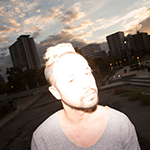 photo: Lieko Shiga
photo: Lieko Shiga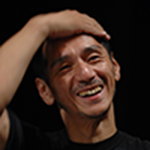 photo: Hiroki Obara
photo: Hiroki Obara[Rehearsal rooms provided for creation]
In order for participants to bring their creative ideas into the laboratory, rehearsal rooms at Tokyo Metropolitan Theatre will be provided on the above laboratory dates—from Monday February 7 to Saturday February 12, and from Tuesday February 15 to Monday February 21—as spaces where each group can work on their creation. Though the time period is limited, we would like to provide an environment where participants can concentrate on creation from morning until night. We hope you will make full use of this opportunity to use practice venues.
To apply for use of a rehearsal room, please fill in the requested date and time on the Excel request form.
*The requested time may be unavailable in some cases, as the schedule will be arranged on the basis of all groups’ requests.
*For information on each rehearsal room (size, etc.), please see the following.
https://www.geigeki.jp/rent/others/rehearsal_room.html
Class fee
Free
Other information
No monetary compensation will be provided for participation and creative activities in the project, expenses related to creative activities, transportation expenses, etc.
*Lecture and laboratory content is subject to change.
Participants must meet all the following criteria.
Application documents
Please fill in the required information on the application form for each course.
Course A: Lecture [Application form (Word)]
Course B: Lecture and laboratory [Application form (Word)]
*If you would like to participate only in Course A (Lecture) in the event that you are not selected as a participant in Course B, please apply separately for Course A as well. (Applying for both courses is permitted.)
*Personal information received in the application process will be used by Arts Council Tokyo only as required for selection screening and implementation of the program, based on the privacy policy of the Tokyo Metropolitan Foundation for History and Culture. Thank you for your understanding.
*Please note that information provided on the application form may be shared with the lecture instructor and mentor. (This applies only to materials of those selected as participants in the program).
How to apply
Please apply to the following e-mail address and write “Application: Program for Dance of the Future” in the subject line. mirainoodori@alfalfalfa.net
Application period
Wednesday, September 1 – Friday, October 1, 2021, 17:00
Selection process and method
Document screening by the selection committee established by Arts Council Tokyo
Notification and announcement of selection results
Notification of selection results will be sent by e-mail to the application representative (whether or not the application was accepted) by around Thursday, October 14. Please note that we will not respond to inquiries by phone etc. regarding selection results. Additionally, the list of participants will be posted on Arts Council Tokyo’s program description page. Thank you in advance for your understanding.
Program for Dance of the Future Administrative Office (NPO alfalfa)
Tel: 080-4670-4520 (weekdays, 10:00-18:00)
E-mail: mirainoodori@alfalfalfa.net
December, 2021 – February, 2022
[Application period]
Wednesday, September 1 – Friday, October 1, 2021, 17:00
2021年度 トライアル事業 未来の踊りのためのプログラム|FY2021 Trial Project - Program for Dance of the Future
